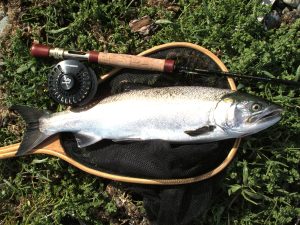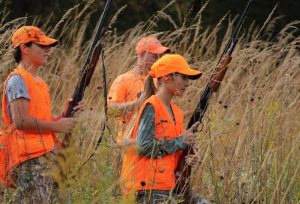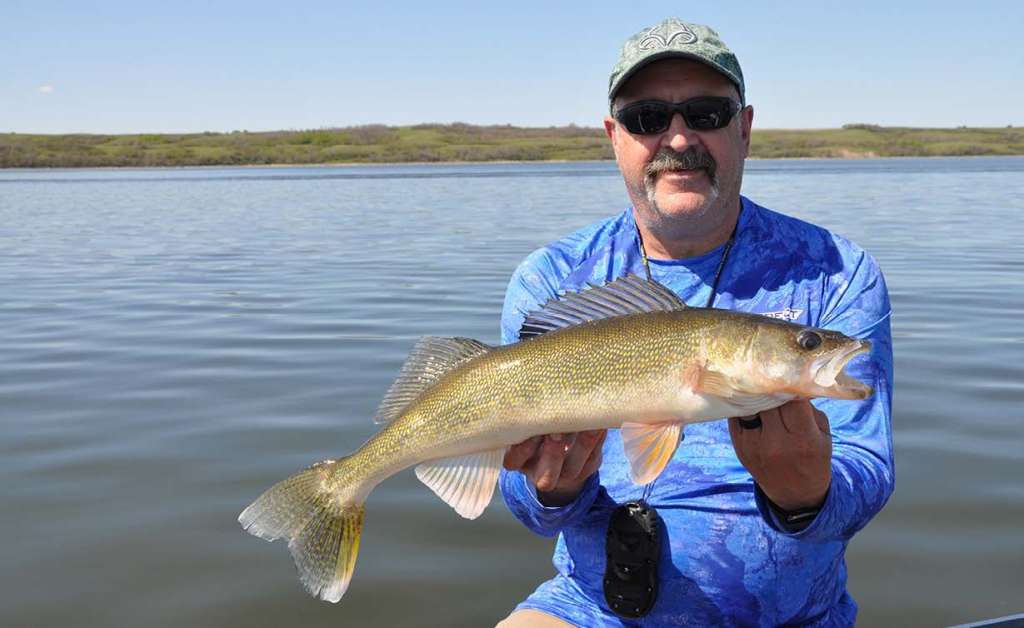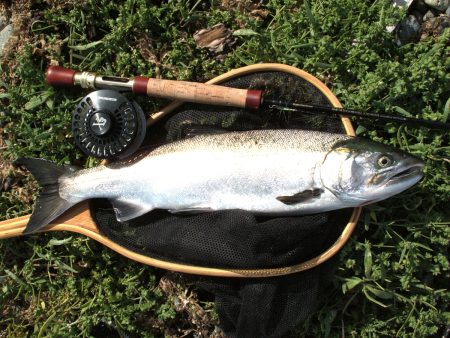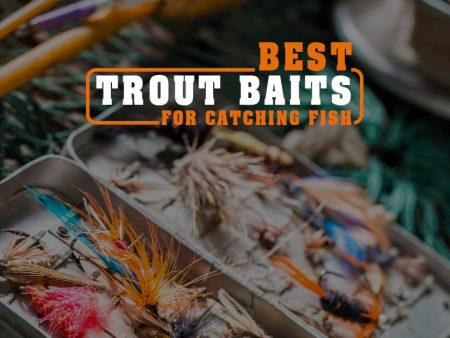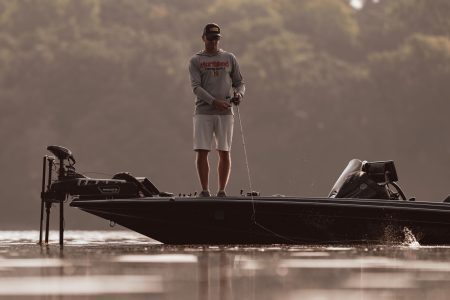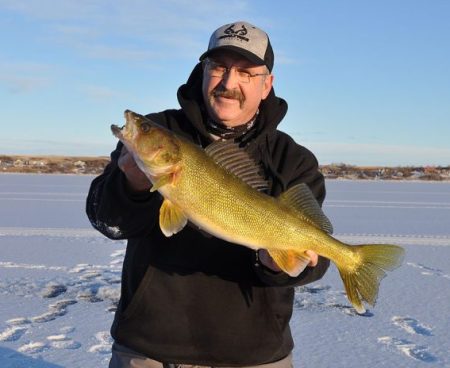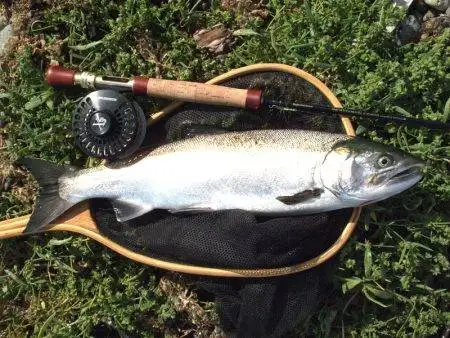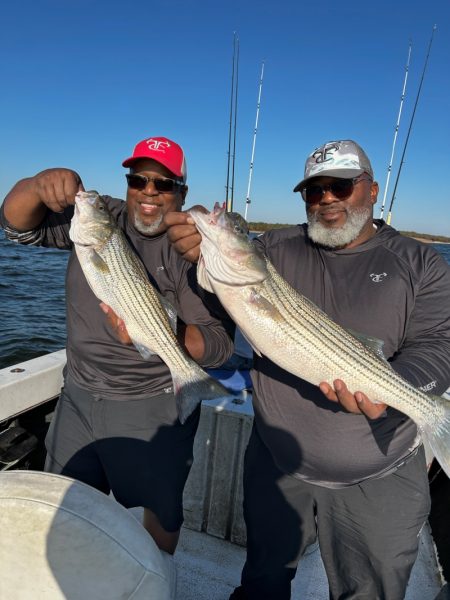As the summer progresses, Walleye often leave their late-spring and early-summer haunts.
Unfortunately, many Walleye anglers keep returning to the same early-season areas, so they ex- perience some very slow fishing action. (Sometimes, the Walleye action is so slow that many give up on the Walleye and spend their time enjoying other summer activities.) Sadly, those who give up because they aren’t adapting their angling presentations and moving with the fish are missing out on some excellent Walleye action.
Walleye don’t quit biting in the summer, because they need to feed. They simply move away from the early-season structure and spread out throughout the water system. They’re roaming in search of minnows and crayfish. On most water bodies, Walleye don’t travel too far from the early season haunts they were using. Typically, they move into a little deeper water, into the 20- to 30-foot range. They’re cruising along mud flats and weed lines in search of minnows, or they’re terrorizing rip rap areas in search of crayfish.
The best way to catch summertime Walleye is to concentrate on the sand flats, weed lines and rip rap areas. Instead of trying to finesse fish with precise presentations such as jigs and Lindy rigs, it’s now time to be more aggressive and pull out the bottom bouncers with spinner rigs. While doing so, you get to cover lots of water, which increases your chances of finding Walleye and triggering strikes.
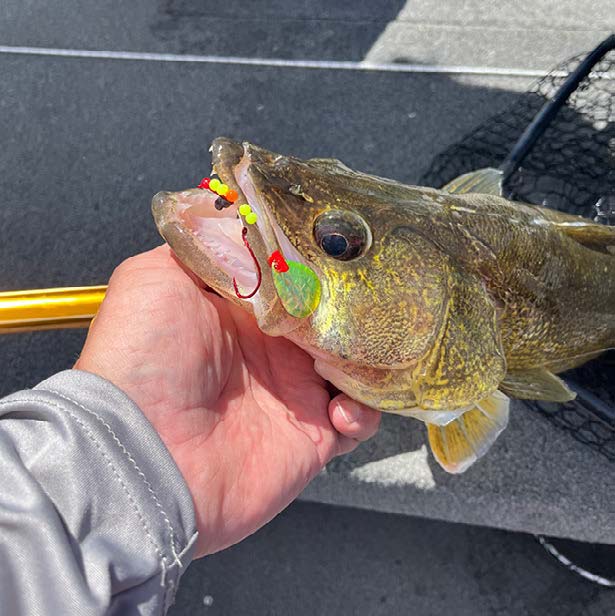
The Gear
To effectively bottom bounce, it’s important to understand the equipment needed to fish with this presentation. There are various shapes of bottom bouncers, but the most common are the ones that look like a backward numeral “7” with a molded weight in the middle of the longest arm. The main fishing lines attach to the area where the long and short arm of the bottom bouncer meet. A spinner rig attaches to the short end, while the longer end skips and bounces off the lake bottom.
Bottom bouncers are designed to be fished as vertically as possible as they are trolled along. Therefore, one size does not fit all. Variables such as boat speed and the depth of water being fished will influence what size of bottom bouncer should be used so the bottom bouncer runs almost vertically. Bottom bouncers are available in sizes ranging from one-quarter ounce to 3 ounces in quarter-ounce intervals.
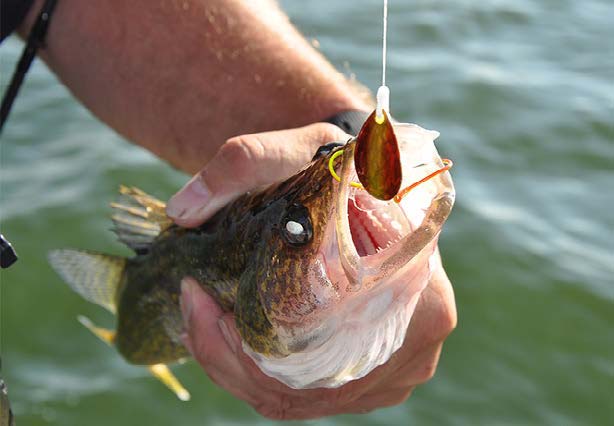
When picking out bottom bouncers, the general rule of thumb is to use one ounce of weight for every 10 feet of water depth being fished. While this guideline works on most days, there will be times when the 10-foot rule needs adjusting and a different size of bottom bouncer will be required to fish effectively.
A heavier bottom bouncer will be needed when fishing in heavy currents or in wavy water conditions. When trolling at higher speeds, a heavier bottom bouncer may be required, while a slightly lighter bottom bouncer will be better at a lower trolling speed.
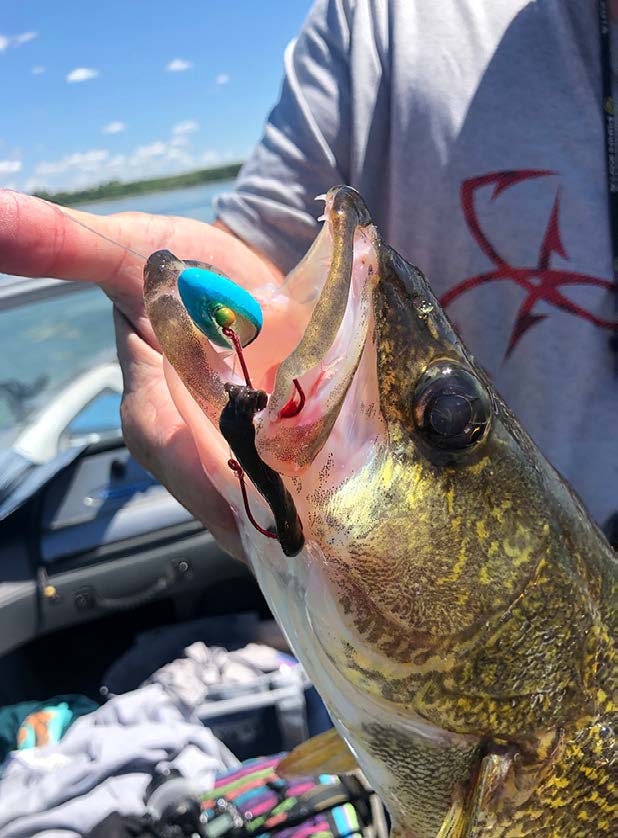
Not All the Same
Sometimes, not everyone in the boat needs to run the same weight of bottom bouncer. I have found that new or younger anglers often benefit from using a heavier bottom bouncer because it allows them to feel what’s going on, which increases their catch rate.
I have also discovered that when fishing with multiple anglers from the same side of the boat, the anglers towards the back should use the lowest weight possible. This is so that their offering runs furthest away from the boat. Then, the other anglers closer to the front of the boat can upsize their weights by one-half ounce per position. That results in them letting out less line and having less tangles with the anglers in the back of the boat.
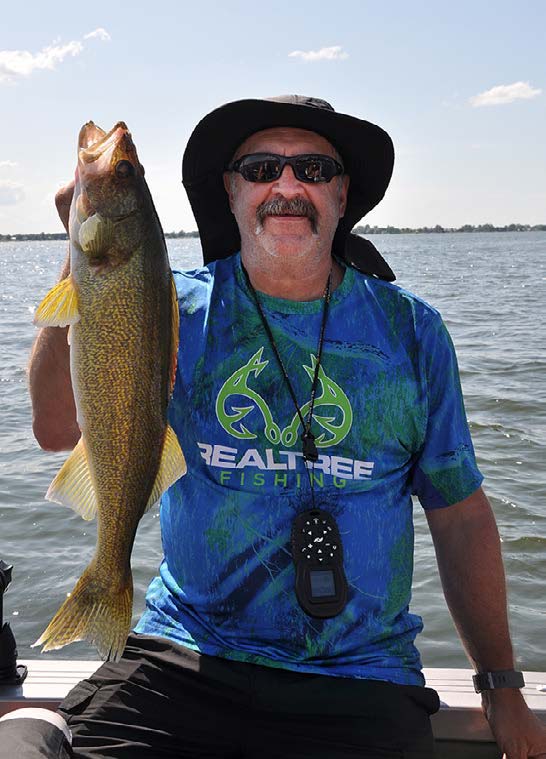
Versatile Rigs
Spinner rigs and worm harnesses commonly called rigs are the most versatile hooks used for bottom bouncing. Basically, these rigs consist of a length of line, a hook or hooks, along with some beads and a blade. The beauty of these lures is that they can be adapted by varying the length of line, the number of hooks, the size, quantity and color of beads as well as the color, style and size of spinner blades. As a bonus, spinner rigs are well suited to live bait like leeches and night crawlers, or frozen minnows and artificial baits.
Short rigs ranging from 30 to 36 inches work on aggressive fish, because as the bottom bouncer moves along, it stirs up sediment and makes noise. That catches the attention of aggressive fish. If the Walleye are inactive, longer rigs from 40 inches to six feet in length seem to work best. The concept with the longer rigs is to let the bottom bouncer and its disturbance go by the fish, then have the bait go by once the commotion has passed.
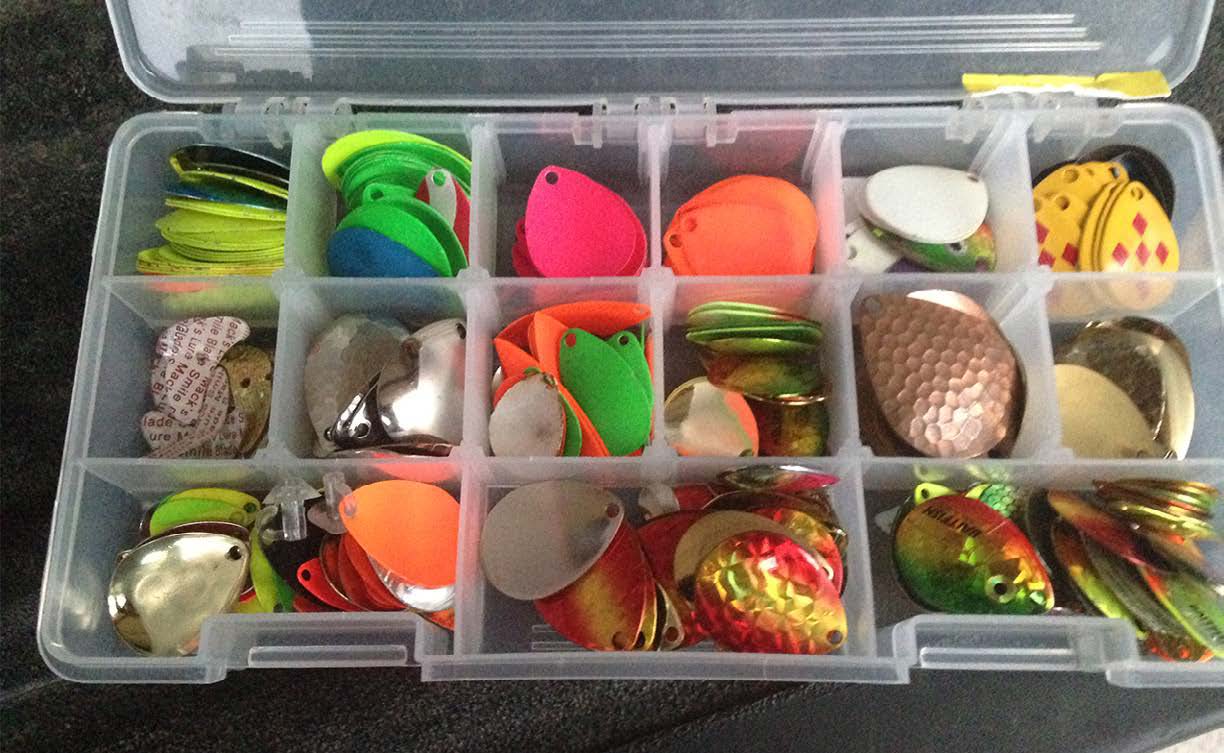
Rods, Reels and Line
When selecting a rod for bottom bouncing, I suggest a medium to medium-heavy action rod. The rod needs to be sturdy enough to be able to pull a bottom bouncer without doubling over yet sensitive enough that you can feel any strikes. My go-to bottom bouncing rod is a 7’3” Medium Action Halo XDIII Pro Casting Rod. This rod is extremely sensitive and has a strong spine to pull even the heaviest of bottom bouncers without bending way over.
While a spinning reel will work for bottom bouncing, my personal choice is a bait caster reel. The bait caster allows for more control in letting line in and out to help keep in contact with the bottom on the initial drop or if there is a depth change as you troll along. Also, you can hold a bait caster with your thumb on the spool for added sensitivity. A reel with a line counter also works well for bottom bouncing as it allows for the exact presentation time after time as you will know exactly how much line you had out after catching your first fish.
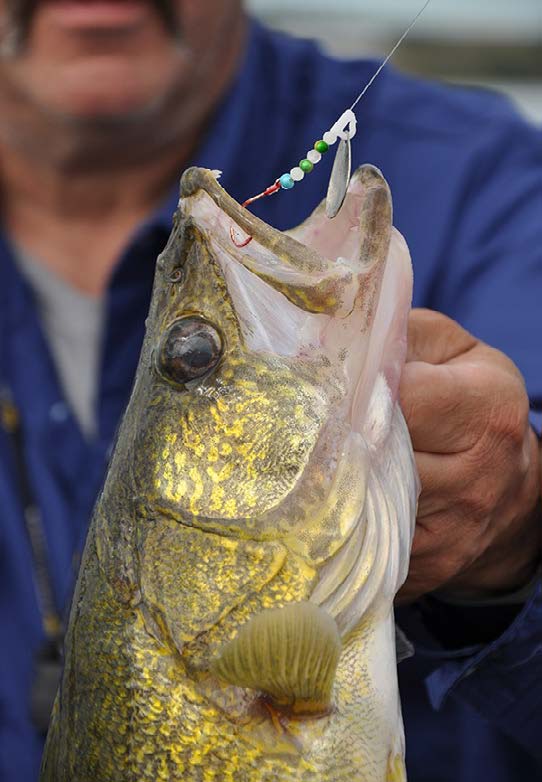
Many anglers like to use braided fishing line over monofilament line for bottom bouncing. The reason is that braided line is more sensitive than monofilament, because it is thinner in diameter than monofilament of similar breaking strength. Braided line also has far less stretch than monofilament line. It is also more durable than monofilament, which means that when snapped, you’ll keep your bottom bouncer and only lose your spinner rig. In recent times, I’ve started using Berkley Nanofil for my bottom bouncing reels. I have switched to this line because it is essentially a cross between braided and monofilament lines, and it has the best qualities of both rolled into one specialty line.
Regardless of what style of reel and line combo you use for bottom bouncing, I suggest using fishing line in the 15- to 20- pound test line breaking strength. My recommendation for this line size is that most spinner rig companies make rigs using 10- to 12- pound test line, so using a little stronger main line will prevent constantly breaking and losing bottom bouncers if you get snagged.
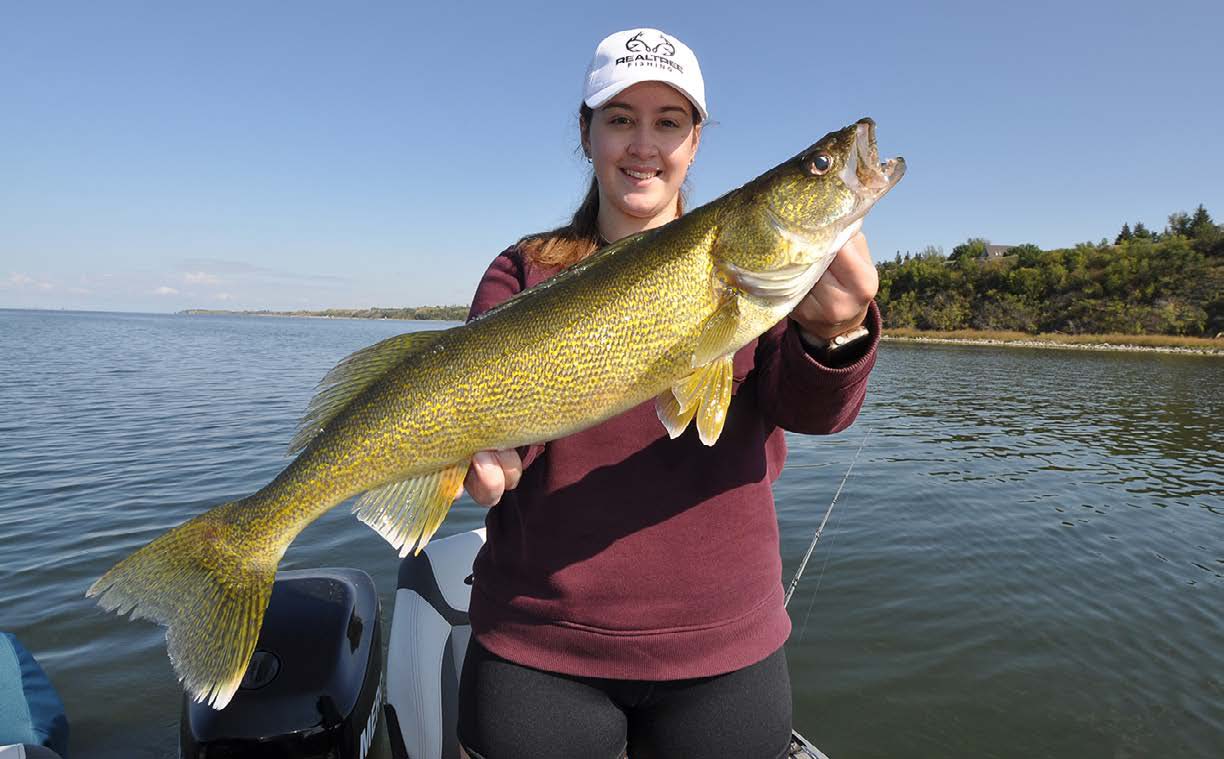
during the summer.
Troll or Drift
To fish with a bottom bouncer and rig, you basically troll using either your main motor, a bow- mounted trolling motor or you drift with the current or wind. Once you obtain trolling speed (which can range from 0.5 to 2.5 mph), simply let line out from your reel by releasing the bail. As soon as the bottom bouncer hits bottom, close the bail to stop any more line from peeling off. Once the bail is closed, let the bottom bouncer start tracking along for a few seconds. Then open the bail a second time and repeat the process. At this point, your bottom bouncer will be running perfectly. As a visual check, the line coming off your rod tip will form a 90-degree angle at the rod and a 45-degree angle where it enters the water.
As you troll along, you should feel your spinner blade vibrating and periodically feel the bottom bouncer tick off the lake bottom. When the Walleye are really aggressive, they’ll smoke your spinning rig so hard that they’ll basically set the hook for you. On other occasions, when the Walleye are neutral, they’ll come up and nip at your bait. When you feel them nipping like this, lower your rod tip towards the fish, wait a second or two to let them gobble up more of your bait, then set the hook by firmly sweeping your rod tip to start the battle.
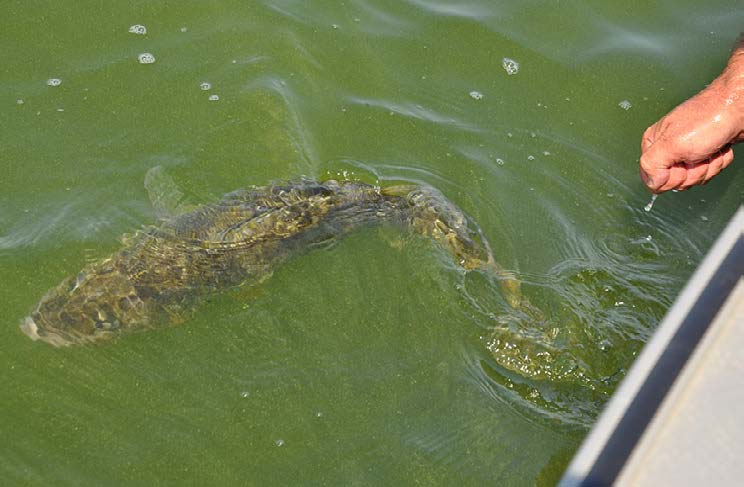
More About Spinners
When picking out spinner blades, there are countless blade styles and color options to select. I personally like using rigs that feature a quick-change clevis that allows me to make blade changes without having to hook up a new rig. When starting each outing, have everyone in the boat run a different rig. If no one catches a fish or has any strikes after 10 to 15 minutes, then it’s time for everyone to change up their rigs and try something else. Keep changing the blade colors, sizes, and blade styles until the hot combo of the day is discovered. If the fishing action slows down, start switching things up again.
Blade Variations
Colorado blades are balloon shaped. They spin very easily, even at low speeds. They have a wide rotational path around the spinner rig and produce lots of vibration. Colorado blades give off the most vibrations and have the most resistance to the water.
Indiana blades a re teardrop-shaped and their oblong shape causes them to spin closer to the spinner rig than Colorado blades do. As a result, Indiana blades produce less vibration than Colorado blades, however, they provide more flash.
Willow leaf blades are long and thin with a pointed tip. They have a very tight spinning action that results in lots of flash and very little vibration. Willow blades require the most speed to spin and are best suited for fast trolling or drifting situations.
In clear water, Walleye can see long distances. Under such conditions, try using natural-colored blades, such as holographic baitfish replicas, or gold, silver, copper, brass, nickel or white. These represent local baitfish.
In murky water or areas with high currents, the Walleye’s vision will be reduced. For better visibility, try using brightly colored blades, such as those of chartreuse, florescent pink, orange or red color. In low-light conditions, darker- colored blades (such as blue, purple, brown and black) will work best.
Smaller blades will work best in clear water and in shallow water areas. Smaller blades are also a wise choice when fishing for neutral and inactive fish or during a cold front. Try using bigger-sized blades for aggressive fish and in deep water areas, or windswept and high-current areas where the water will be murky and more flash and vibration is needed to attract fish.
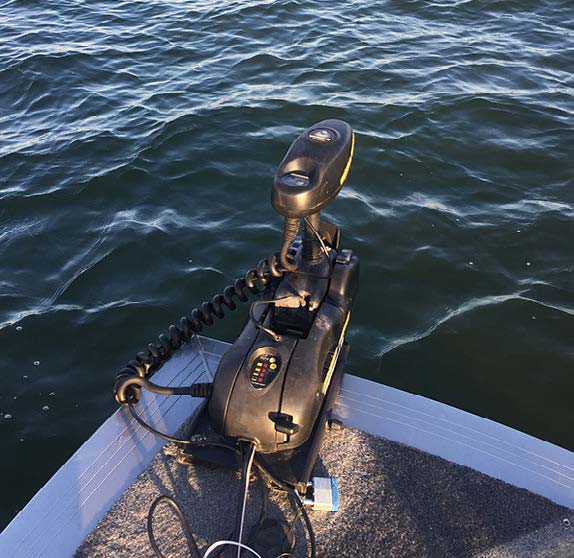
with a bottom bouncer and spinner rig.
A New Twist
When I first started fishing with bottom bouncers and spinner rigs, the blade styles were limited to Colorado, Indiana and Willow spinner blades. In recent years, there have been a number of companies designing new styles of blades. These include Hatchet blades, blades with holes cut in them, and blades with raised bumps or curled edges. Due to the varying styles, each one of these blades spins differently and creates its own unique vibration and flash. Those varieties giving Walleye anglers more and more options to change things up and trigger strikes.
One of my favorite propeller blades is the Mack’s Smile Blade, the middle of a sparkly foil blade. The beauty of these blades is that they require much less speed to rotate and are a perfect choice to use in colder water or after a cold front, when the fish are neutral to inactive. When fishing these blades, I often add a float with beads to elevate my bait off the bottom.
Over the years, all spinning blades would track along the mainline of the spinner rig and spin in one direction. In very recent times, PK Lures has developed two rigging components that have completely different motion than all other spinner rig styles. The PK Dakota Disk is a small, round disk that runs through the middle of the line. It causes the rig to move unpredictably and sporadically from side to side and up and down, which helps trigger walleye to strike, because this action imitates a bait fish trying to get away.
The second new blade is the PK Wobbler Blade. This is an egg-shaped rigid floating blade that will make three to four rotations in one direction then shift and make three or four rotations in the opposite direction. The combined flash and directional changes drive Walleye crazy. I’ve been using this rig with great success the past two seasons, and I really like the holographic-colored ones.
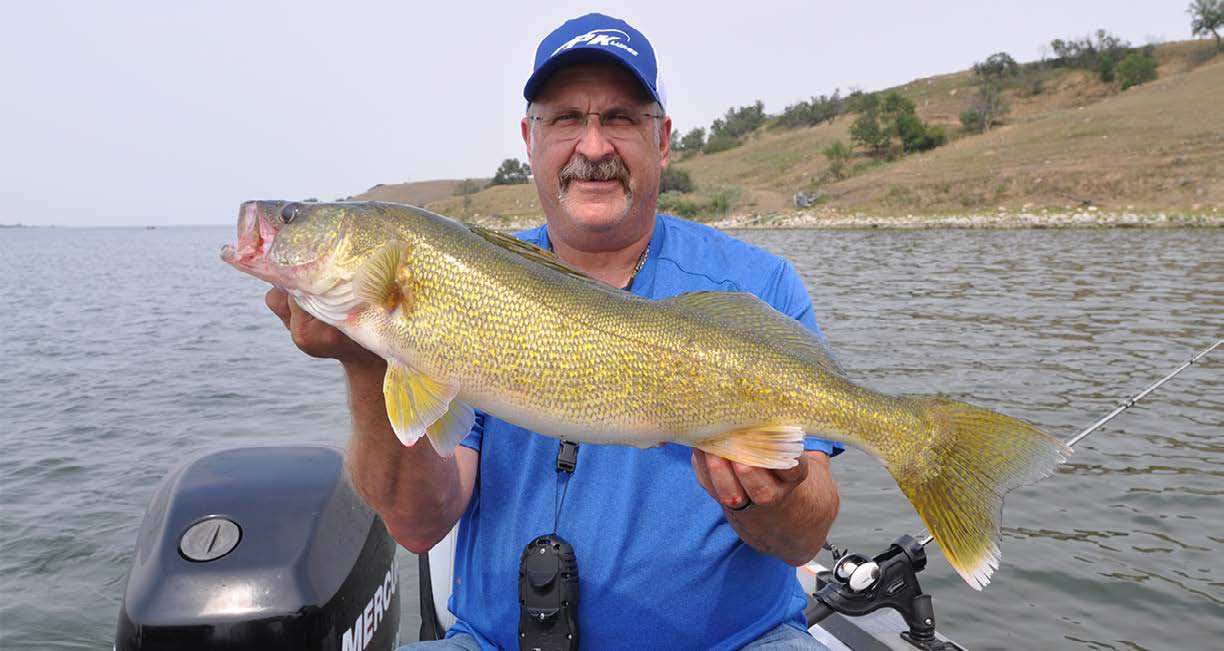
Slow-Death Rigs
No discussion of fishing with bottom bouncers is complete without talking about slow-death rigs. The slow death rig is a bent or twisted Aberdeen-style hook where you thread half a night crawler on the hook with just a short trailing tail. When trolled at speeds between 0.5 and 0.8 mph, the bends in the hook cause the worm to spin in a large slow circular motion, which seems to drive late- summer Walleye into a feeding frenzy.
So this summer, when it seems the Walleye bite has turned off, pull out your bottom bouncers and spinner rigs and find out just how good this kind of summer fishing really is.
Per our affiliate disclosure, we may earn revenue from the products available on this page.

